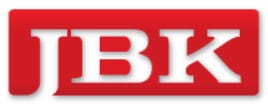The Case Study:
The Challenge
One of the top telecommunications equipment makers in North America was faced with a situation where they had never formally introduced a consistent sales training program across the company. Multiple sales training organizations existed worldwide throughout the company and a variation of sales training methodologies and processes were being used. Each organization had a different view of how they approached the customer from the first engagement to discovery to the close of sale resulting in inconsistent messages to the customer.
The entire sales organization – managers, account managers, sales representatives, system engineers, and post-sales technical support engineers – needed a consistent methodology to approach customers whose decision criteria were more business oriented than technology-based. They also needed a new process and skill sets to communicate internally and be perceived as a united sales team in front of the customer. Senior management’s directive was to accelerate this shift into their practices and culture as rapidly as possible.
The Solution
Our client needed a consistent solution that could be deployed on a global basis. We designed and implemented a fully integrated, customer-specific development curriculum that consisted of 3 different elements; Executive Focused Selling for the strategic account teams, a new Opportunity Management process for the organization to deploy on a worldwide scale, and a fundamental consultative sales process for all sales people and system engineers.
The programs were re-designed to focus on the core challenges in executing the client’s go-to-market strategy. The company’s value proposition was changing, requiring the field to establish influential relationships with higher level executives who were making business decisions about deploying technology.
The company’s core goals, initiatives, and strategies were incorporated into the program content in order to accelerate the field’s understanding of the new direction. The program also provided the context for introducing new sales skills and processes in the field. Company-specific, competitive case studies and role plays were developed and added to the programs. The content within each program was modified to ensure consistency of terminology and process. Participants prepared for each learning experience by bringing live, current accounts, and sales opportunities to work on during the sessions.
Field management was also engaged in the process. As most of them had proven themselves successful in the legacy selling processes, they had to rapidly learn the new skills and processes taught in the program. The program also provided them with coaching and management skills that were required to accelerate adoption in the field. Specific sessions were designed and delivered to this group of first and second level field managers to accelerate their adoption of the new sales and management processes.
Finally, as the speed in which the field adopted these new skills and processes was paramount to our customer, we gathered a core team of 24 session leaders experienced in technology. We conducted a conference which was supported by our customer’s management and marketing people. The session leaders learned about the customer’s company, its new strategies and initiatives, the competitive environment in which they sold, and the new program content and customization.
There was also an organizational issue to be addressed. Over the years, the company had built up a large number of individual training organizations, some tied to business units, some to product lines, and some to geographies. What resulted was a large, fragmented training and development effort that delivered uncoordinated messages to the field.
As the company was centralizing its field training into a single, focused organization, we facilitated a series of discussion workshops with members of this large organization around the new corporate direction and realize some potential synergies.
The Results
Significant revenue increases were attributed to the programs as well as a positive cultural shift. Win ratios in their highly competitive engagements increased. Sales campaigns were initiated with higher level customer contacts. Marketing and management shifted their focus from technology-based arguments to business-based value propositions and quantified financial impact.
The training and development organization was streamlined, and their impact on the field became more focused and more visible. Internal communication was increased across all sales organizations as the executive teams began actively engaged in using the same terminology. The company was later involved in a merger with a much larger organization which resulted in the programs becoming a core element of the new company’s culture. The new company used the programs as best practice and deployed them company-wide.


